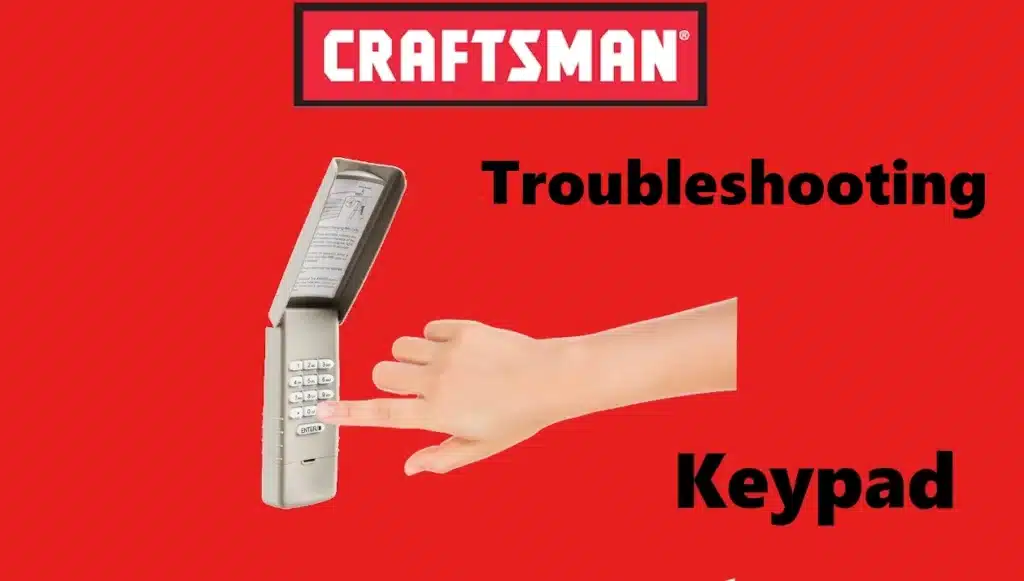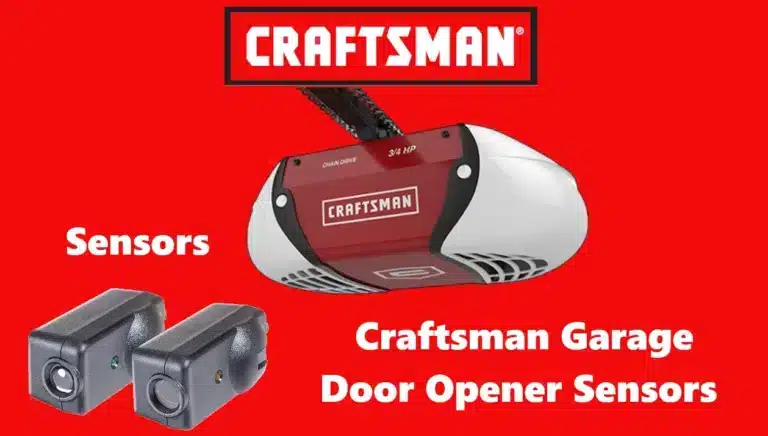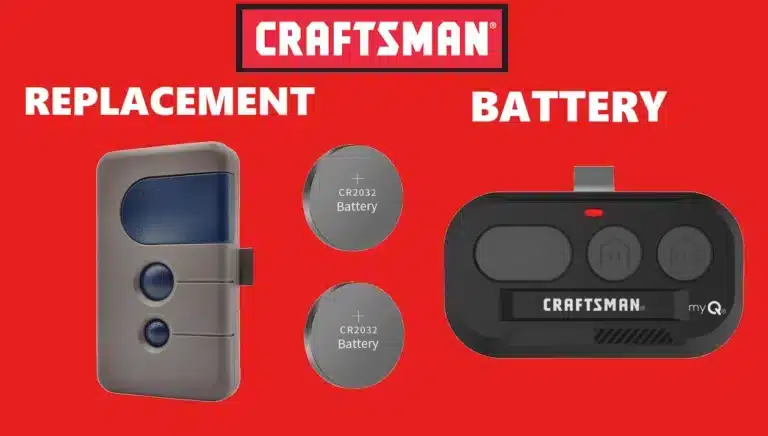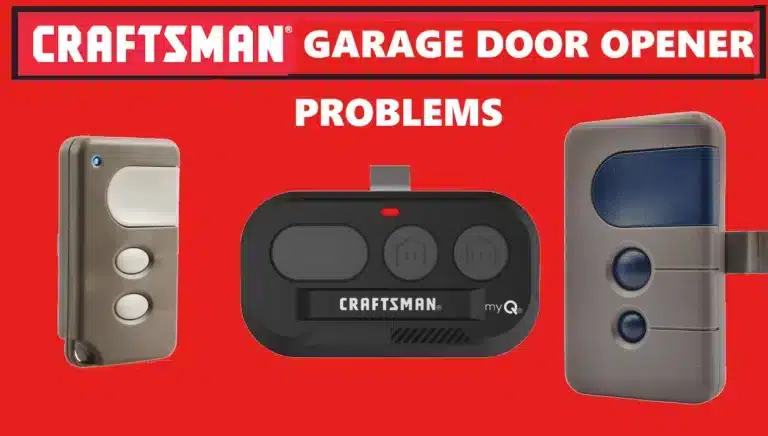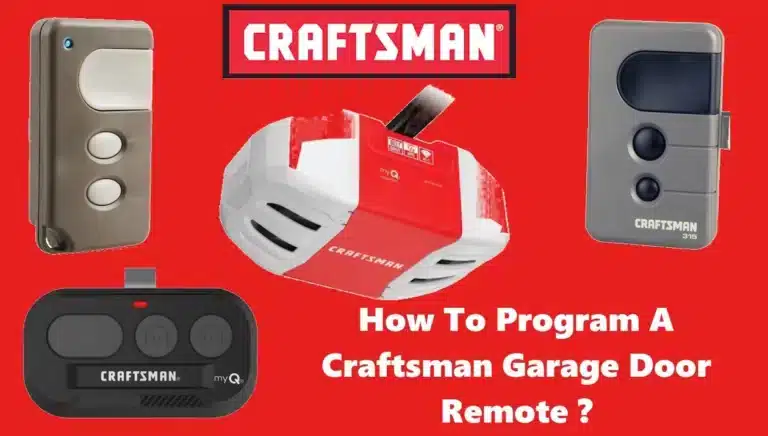If your Craftsman garage door opener keypad is not working properly or fails to program, try these troubleshooting tips. Many issues can be resolved with simple fixes:
Check/Replace the Battery:
The most common cause of a non-working wireless keypad is a depleted battery. Most Craftsman keypads use a 9-volt battery (older models may use a 12-volt); replace the battery if it’s weak or dead, and make sure it’s inserted with correct polarity. After installing a fresh battery, you often need to reprogram the keypad PIN to the opener again, because some models lose their coding when power is removed. Always close the keypad cover fully to conserve battery life when not in use.
Reprogram or Reset if Necessary:
If the keypad still doesn’t respond after a battery change, try to reprogram it from scratch (using the steps in the previous sections). In some cases, you might need to clear the opener’s memory and then reprogram all remotes and the keypad. You can clear the opener memory by holding down the opener’s Learn button for about 6 seconds until the LED goes out (this will erase all remote controls and keypad codes from the opener). Then re-teach the keypad and any remotes. Note: If you do this, any existing remotes will stop working until you reprogram them, so use this step only if other troubleshooting fails or if you want to wipe out old codes for security.
Worn or Stuck Keys:
Keypad buttons can wear out over time, especially the digits used frequently in your PIN. If one of the number keys has failed, the keypad won’t recognize codes containing that number. A quick test is to program a completely different PIN (using all different digits) to see if it works. For example, if your old code was 1-2-3-4 and the door isn’t responding, try programming 5-6-7-8 as a new code.
If the new PIN works, it likely means one of the keys in the old PIN (1, 2, 3, or 4) is worn out and not registering. You can continue using a different PIN that avoids the bad button, or ultimately replace the keypad unit if keys are failing. Keypad units exposed to harsh weather can sometimes develop issues; using the cover and keeping it dry will prolong their life.
PIN Entry Errors:
Remember that when entering your PIN, if you accidentally press the wrong digit, you can stop and re-enter the correct code before pressing Enter. The keypad only transmits the last 4 digits entered prior to hitting the Enter button. So, if you make a mistake, just re-enter the 4-digit code and then press Enter – do not press Enter after an incorrect partial entry. Also, ensure you press the keys firmly. The keypad’s backlight should typically blink while it’s transmitting the code.
Range or Signal Interference:
Wireless interference can prevent the keypad’s signal from reaching the opener. Make sure you’re standing within a reasonable range (usually within 10-20 feet is best) and that there are no large metal objects directly blocking the signal. Electronic interference is also a possibility – for instance, some LED light bulbs, fluorescent lights, or nearby radios can disrupt the garage door opener’s radio frequency.
If you installed new LED bulbs in the opener unit, try temporarily removing them to see if the keypad works (some non-genius LED bulbs emit RF noise on the same frequency). Additionally, the surface on which the keypad is mounted can affect signal: if it’s mounted on metal or reinforced concrete, it might dampen the wireless signal. Craftsman support suggests taking the keypad off its mounting surface and testing it in your hand – if it works when not attached to the wall, the mounting surface could be interfering. In that case, add a spacer or rubber grommets behind the keypad or mount it on a small wood backing to isolate it from the surface.
Temporary PIN or Lockout Issues:
If your keypad supports temporary PINs for guests, be aware that when a temporary PIN expires (after the set number of hours or uses), it will no longer open the door, though it might still close it. An expired temporary code could make it seem like the keypad “isn’t working” if you accidentally try to use it. In such cases, clear out the expired temporary code (or program a new one) following your manual’s instructions. Also, some keypads have a lockout feature: entering an incorrect PIN repeatedly may disable the keypad for a short time (to deter brute-force entry). Simply wait a minute and try again with the correct code.
Physical Damage or Opener Issues:
Inspect the keypad for any obvious damage – water ingress, corrosion on the battery terminals, or cracks. A physically damaged keypad might need replacement. On the opener side, ensure the antenna wire hanging from the motor unit is intact and fully extended (this wire receives the keypad’s signal).
If other wireless remotes also have trouble, the opener’s receiver logic board could be failing. But if remotes work and only the keypad doesn’t, it’s more likely a keypad issue. As a last resort, power-cycle the opener by unplugging it (or turning off its circuit breaker) for about a minute, then plug it back in. This can reset the opener’s internal electronics from any glitch that might be preventing it from accepting new codes. After restoring power, try the programming steps again.

